2025 Porsche 911 Carrera GTS T-Hybrid Is So Good It Makes The Haters Look Real Dumb
The evening our band of merry automotive journalists arrived in Málaga, Spain, model line director Frank Moser started off the presentation for the 2025 Porsche 911 Carrera GTS by showing us a bunch of hate comments Porsche received on social media when the facelifted 992-generation model was unveiled a few months ago. You see, the new Carrera GTS is the first roadgoing hybrid 911, and Porsche Guys are big mad about it.
“When it will be electrified, the 911 is done, I’m afraid,” “The beginning of the end. Good night Porsche,” and “Who needs a hybrid 911?” were all quotes floating around a rendering of the T-Hybrid’s badge. The comments and posts I’ve personally seen online are even dumber, mis-informed or just outright ridiculous. People really think that electrifying the 911 will lead to the death of not only car enthusiasm, but society as well.
After spending the following day driving the Porsche 911 T-Hybrid up some beautiful Spanish mountains and around the famed Circuito Ascari (you know it from all those “Top Gear” episodes), I’m here to tell you that electrifying the 911 has only made it better. The GTS’ powertrain is a marvelous bit of engineering, as good and fun as it is interesting from a technical standpoint.
Full disclosure: Porsche flew me to Spain to drive the 992.2 lineup on the road and on track. We stayed at a lovely resort on a golf course, ate some wonderful food and got to have Ascari all to ourselves.
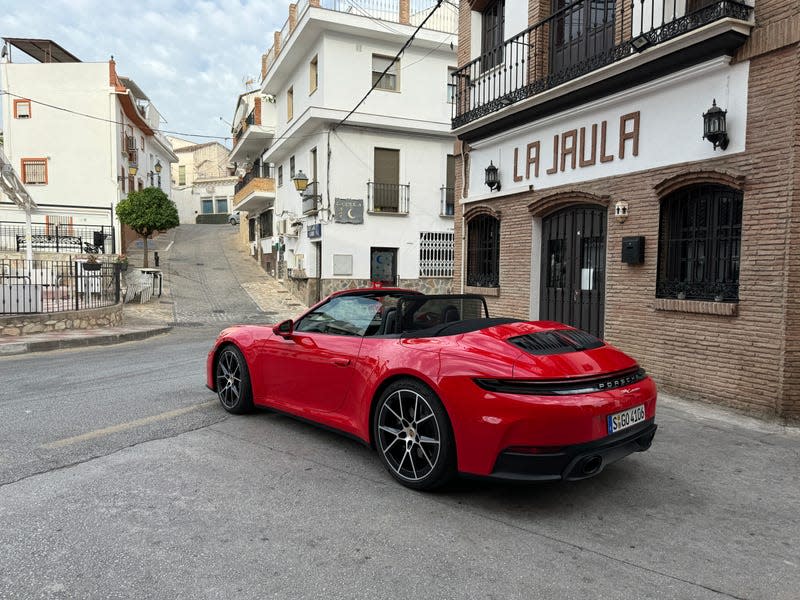
I start off the morning in a base model 911 Carrera cabriolet, the only other trim level to receive the 992.2 facelift so far, and it feels pretty much the same as the pre-facelift model. That is to say, it’s excellent. For 2025, Porsche fitted the base car with the turbos from the old Carrera GTS and the intercooler from the 911 Turbo for a boost of 9 horsepower, which resulted in the slightest of acceleration and top speed improvements.
Despite Porsche Guys saying how big and unwieldy the 992 is, the car feels at home in the narrow, hairpin-filled, frequently cobblestoney streets that snake through the mountain towns looking over the Alboran Sea, even though it lacks the optional rear-wheel steering. Visibility is excellent as usual, and the 911’s hips don’t feel too wide when trying to navigate around Peugeots parked on sidewalks. It’s great on the freeway too, and even at higher speeds I’m able to hold a normal conversation with my drive partner thanks to the great wind deflector.
Beyond how the base car drives, the much bigger news is inside, where every 911 has a fully digital gauge cluster in place of the old analog tachometer that was flanked by a screen on each side. Porsche Guys have been in a big uproar about this for some reason. I don’t get it. I think the new 12.6-inch screen is great, an improvement, even. It’s able to show more information than the old setup — or you can choose a super simple, understated design — plus you can have a full-screen nav view that’s useful for navigating complex roads in a foreign country. Don’t worry, you can still have it display a central tach that looks nice, and there are multiple retro designs including one with a rotated tach that has the car’s redline at the 12-o’clock marker.
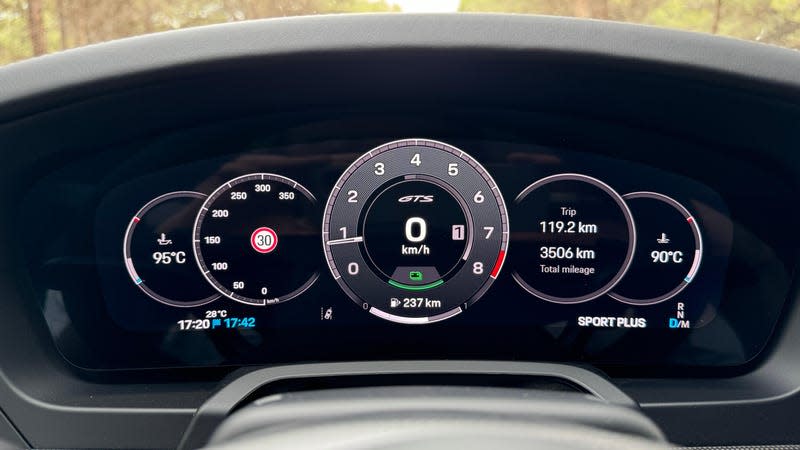
Those Porsche Guys are also really upset about the 992.2 getting a normal start button rather than the old keyfob-shaped knob thing that you had to twist. I also don’t understand this outrage. A pastiche of a real key, the twist knob was always actively annoying to me; its function could be better accomplished by a button, and its tactile feel didn’t add anything to my enjoyment of actually driving the car. Isn’t that what we’re all here for? If pressing a button to start your car instead of twisting a knob really upsets you that badly to the point of turning you off of buying it completely, I say good riddance. Porsche itself markets the start button as a connection to its current GT race cars, but it’s also to keep the Porsche experience consistent across the whole lineup.
After arriving at the track and eating some shockingly good asparagus risotto, we get a deep dive into the GTS’ T-Hybrid powertrain using both physical cutaway displays and Apple’s virtual-reality headsets. There have been a lot of complicated powertrains in Porsche 911s over the years, but the T-Hybrid takes the cake — it’s also one of the only modern instances of a new engine having larger displacement and fewer turbochargers than its predecessor, and the first turbocharged 911 in thirty years to have just one turbo.
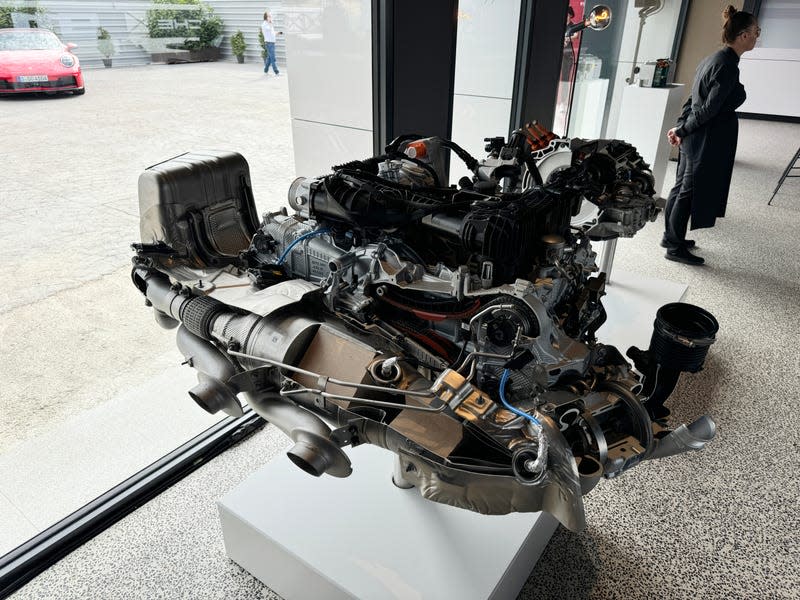
In place of the base Carrera’s twin-turbo 3.0-liter flat-6 is a brand-new single-turbo 3.6-liter flat-6, and it’s actually smaller in physical size thanks to the high-voltage electrical system necessitated by being a hybrid. In addition to its growth in displacement, the engine’s bore and stroke have also been increased, and Porsche says it’s always running with the ideal air-to-fuel ratio of Lambda 1. The air conditioning compressor is now electrically driven so there’s no need for a serpentine belt or accessory drive, freeing up space for ECUs and other hybrid-related bits like the DC-DC converter to go on top of the engine while maintaining its 4.5-inch-lower height.
You can only get the GTS with a PDK dual-clutch automatic transmission, because the T-Hybrid’s permanent synchronous electric motor is integrated into the transmission housing itself like on other hybrid Porsches. There’s no clutch between the transmission and motor, as it’s coupled directly to the crankshaft and it fits within the gearbox’s oil-cooling system, and it does the work of the starter and alternator, which aren’t needed. The motor immediately provides up to 54 horsepower and 110 pound-feet of torque, and it can recuperate that full amount back into the system.
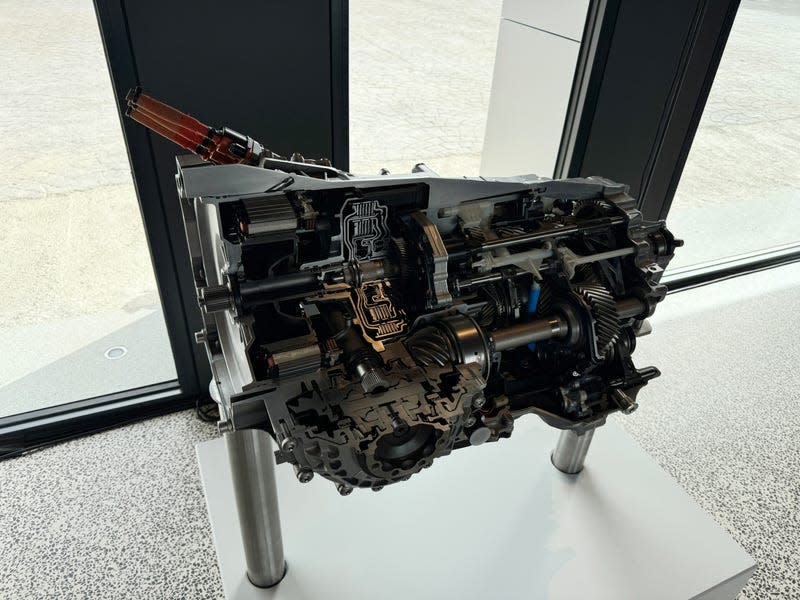
Mounted under the hood is the 1.9-kWh 400-volt battery pack (1.47 kWh of which is usable) that weighs the same and takes up the same amount of space as the old lead-acid 12-volt battery, which itself has been replaced by a thin lithium-ion unit that’s now under the rear parcel shelf and weighs a third of what the old one did. The hybrid battery has its own water-cooling system to keep temperatures down.
But it’s that single turbocharger that’s the real star of the show. Moser says the engineering team’s goal was for the T-Hybrid to feel like a naturally aspirated engine, so the 911 is the first Porsche to use an electric turbocharger in a bid to completely negate turbo lag. Positioned in the back right corner of the engine, the e-turbo is one-third larger than the base car’s turbos, and there are new exhaust manifolds and a more efficient charge-air cooler. An electric motor is mounted inside of the turbo directly on the turbine shaft between the compressor and turbine wheels, and there’s no wastegate needed as the turbo’s speed is automatically controlled by said motor.
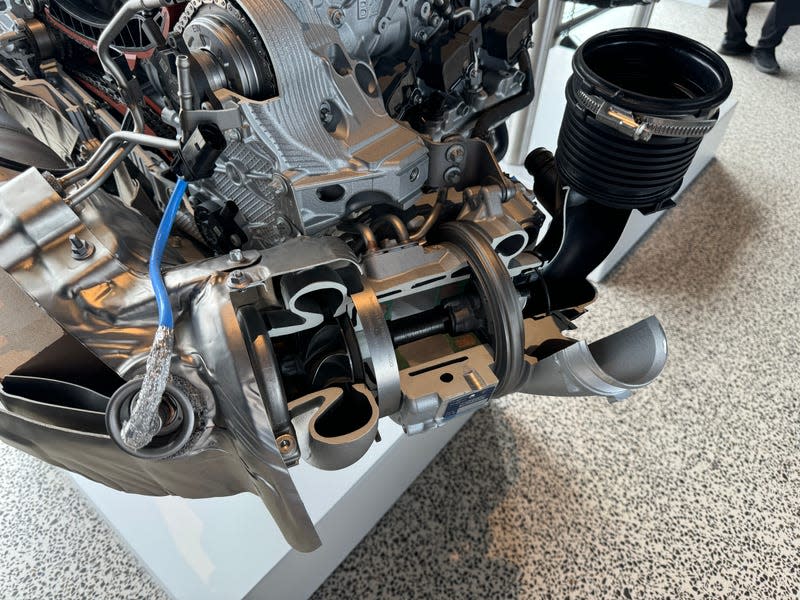
In addition to spinning the turbo shaft and generating power from that rotation, it can recuperate heat energy from the exhaust gas flow and feed it back to the system, generating up to 15 hp of power that can be sent to either the PDK’s motor or back into the battery. That all means the turbo holds a higher load of boost power, pressure and revolution, giving it much quicker reaction times.
On its own Porsche says the single-turbo engine produces 478 horsepower and 420 lb-ft; factor in the hybrid system and total output is 532 hp and 449 lb-ft, an increase of 59 hp and 29 lb-ft over the nonhybrid 992.1 GTS. Peak torque comes in at 2,000 rpm, with 368 lb-ft of it available at just 1,500 rpm. Porsche says the T-Hybrid weighs just 103 pounds more than the old GTS, which Moser says is “very acceptable for the performance,” though that figure is helped by rear seats now being a no-cost option instead of standard. Porsche has yet to say anything about the T-Hybrid’s efficiency, only saying that it’s improved compared to the GTS and the start/stop system has smoother operation. Beyond just needing to meet stricter emissions regulations, efficiency isn’t really the point of the car’s electrification anyway — performance is.
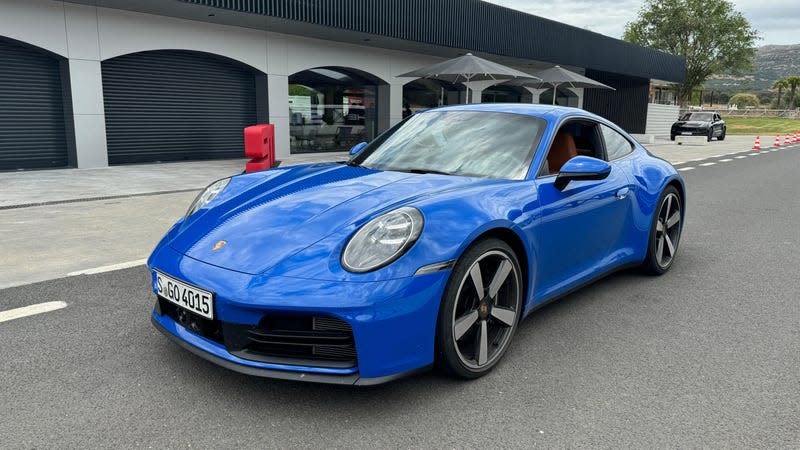
Before I can digest all of that information myself, it’s time to hit the track. For our initial sighting lap and first three hot laps I’m driving a base model, rear-wheel-drive 911 Carrera coupe, which serves as a great control point and the perfect way to learn the track. That’s good, because Ascari is tough, and our instructor is not holding back in his 911 Turbo S. The 3.4-mile-long course is made up of sections copied from other iconic race tracks, so it’s a mess of hairpins, esses, right angles, slight kinks and other corners that are just plain weirdly shaped. Many of the corners have serious camber, elevation changes and blind entries and/or exits, too. It’s incredible.
After the first stint we pull into the pits, where I jump into a rear-drive GTS. From the moment I press that starter button the T-Hybrid feels like a different animal. Its engine barks to life, the centrally mounted dual exhausts emitting a deeper baritone idle, and twisting the steering wheel dial into Sport Plus mode ups the idle rpm and opens up the baffles even more. Now that I’ve got a few laps under my belt and feel more confident in the track I start off at a faster pace, and man is the new GTS fast. Porsche says it will hit 60 mph in just 2.9 seconds (so like 2.6 seconds in the real world), 0.3 second quicker than the old nonhybrid GTS, and in a drag race the new GTS would be more than a full car length ahead. I’m much more easily able to keep up with the instructor’s Turbo S, who still isn’t going slowly; around the Nürburgring, the T-Hybrid is 8.7 seconds quicker than the old GTS, and it’s slightly quicker than the time a 992.1 Turbo S posted in the hands of Sport Auto.
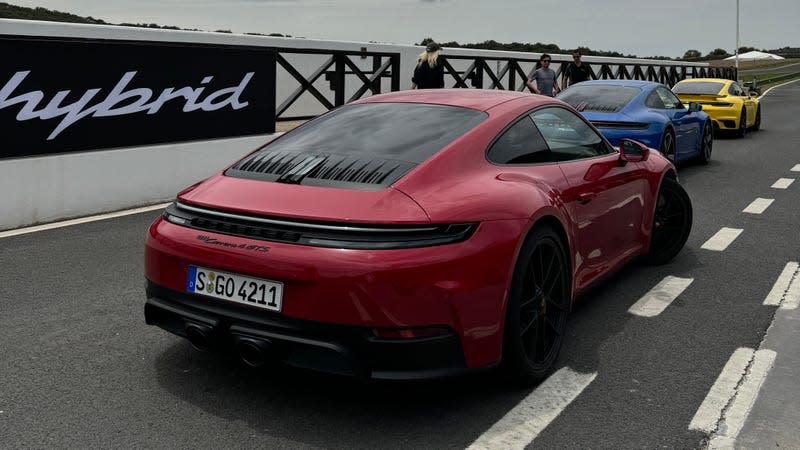
More than just the outright speed itself, it’s the T-Hybrid’s eagerness to go quickly that stands out. It quite viciously revs to its 7,500-rpm redline, and as Moser promised, the powertrain really does feel naturally aspirated — if I didn’t hear the turbo constantly whirring as it spools up and making pssh noises when I let off, I’d never guess the car is turbocharged. Peak boost comes in 0.8 second, three times quicker than in the old twin-turbo GTS, and power delivery is super linear, immediate and strong throughout the entire rev range. The engine as a whole sounds awesome too, distinct from all other modern 911s with a tone more like older racing Porsches and nice organic pops and bangs and burbles when shifting.
Beyond the turbo’s impressive operation, there’s a ton of stuff going on in the hybrid system that’s also basically imperceptible to me as the driver. Sometimes the energy stored in the battery is used to just spool up the turbo as quickly as possible, then seamlessly switching to power the electric motor for tip-in torque fill. In some situations only the engine power is necessary, but in others the battery is sending energy to both the turbo and the electric motor at once. Under full throttle the turbo can send power to the electric motor separately from the high-voltage battery kicking in at the same time. The only way to really know what’s going on are the charge and boost meters in the tach and the performance display in the center screen, which shows a three-dimensional cutaway of the real-time energy and power flow along with gauges that tell you battery temperature and charge, plus how much power is coming from the engine and the electric motor.
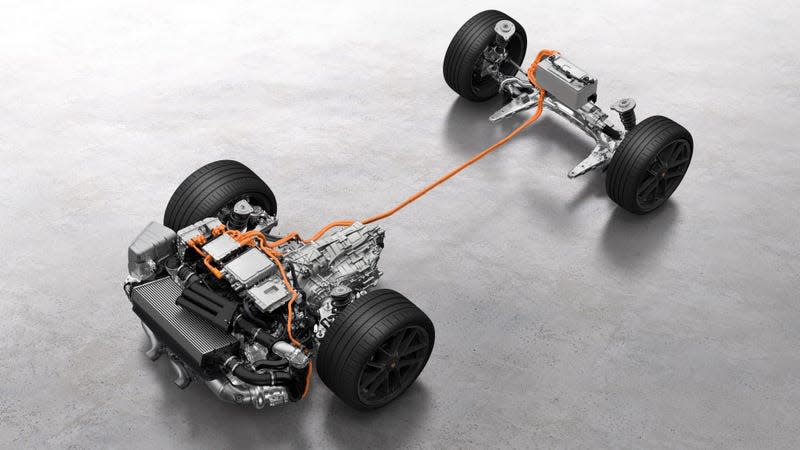
Energy can also be recuperated under braking or when coasting on flat ground or downhill, though I don’t really feel the regeneration working like I would in a plug-in hybrid or an EV. The hybrids we’re driving are fitted with the available carbon-ceramic brakes, which have larger discs than before and now use 10-piston calipers at the front, up from six. Porsche’s carbon brakes are always great and these are no different, having a strong initial bite and linear feel without being too grabby. The GTS has new active aerodynamics that includes flaps in the front bumper and in the underbody just ahead of the front wheels, improving the drag coefficient and efficiency, increasing downforce and cooling, and reducing lift.
The GTS comes standard with adaptive dampers, lower suspension and rear-axle steering (the last of which was previously optional), and all the cars I drive have the optional Porsche Dynamic Chassis Control (PDCC) roll-stabilization feature. In the GTS, PDCC is integrated with the hybrid’s high-voltage system and electro-hydraulically controlled, which makes the system more precise and even quicker to respond. (This change also makes the operation of the front-axle lift much quicker, raising in just one second.) To make up for the hybrid’s extra weight, the GTS has firmer springs, different anti-roll bars and unique damper tuning, and the rear wheels are 10 mm wider. As usual with Porsche the steering is basically perfect, ultra-precise with tons of feedback, and it’s easy to make quick corrections without upsetting the balance.
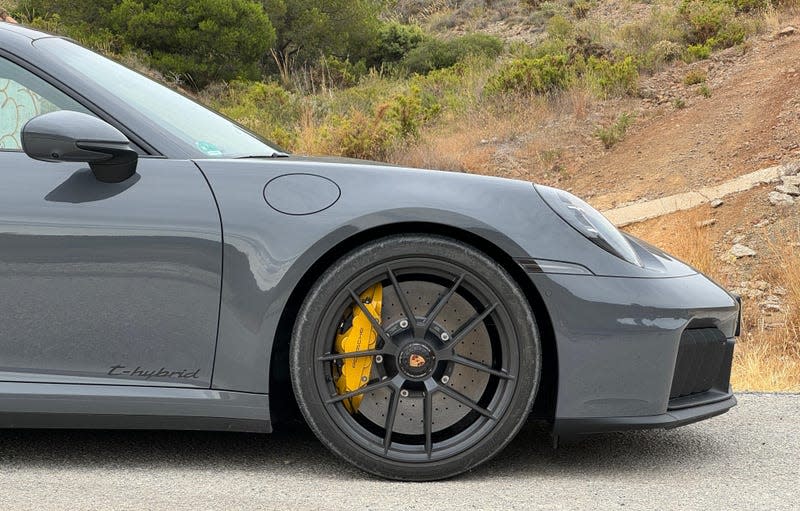
For my last four laps I swap into an all-wheel-drive Carrera 4 GTS, which carries a slight weight penalty and a price tag that’s $7,800 larger. If I wasn’t able to drive them back-to-back, it would be tough to tell the difference between the two cars. The rear-wheel-drive GTS feels sharper on turn-in and has more rear-end wiggle on corner exit, while the all-wheel-drive model has more neutral handling characteristics and is able to power out of corners harder. Which drive configuration you should buy is all up to what sort of handling you prefer and whether or not you get lots of gross weather — personally I’d want a Targa GTS, which only comes in all-wheel drive anyway.
After our last stint it’s time to head back to Málaga, and I grab one of the rear-drive GTS coupes that we just ripped on track. Driving around in Normal mode, the GTS feels just as relaxed as the base Carrera. It’s calm, quiet and comfortable, a sports car you would love to drive every day. When I do need to pass slow-moving vans, the Sport Response button is now red, which makes pressing it to instantly drop some gears and raise the revs even more exciting, but even just mashing the gas prompts immediate response from the engine. I let off the gas, civilian successfully passed, and it quiets back down just as quickly as it roared to life. To me one of the marks of a good sports car is being able to have fun on a twisty while driving at a normal pace, and the T-Hybrid achieves that.
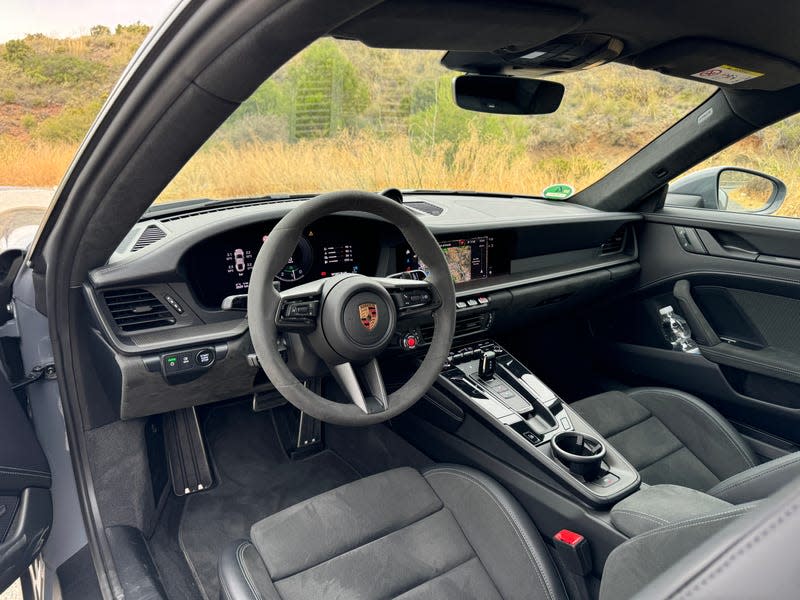
Porsche said we have to bring the car back to the hotel by 6 p.m. at the latest, and we pull up to the valet at 4:55. After dropping off my drive partner at the hotel, I turn around and head back into the mountains, one of the best decisions I’ve made in a while. Where on track I was laser-focused on getting the racing line right and really learning how the cars behaved, on the glorious roads I can relax and really start to have fun. The T-Hybrid’s acceleration is even more intoxicating here, but it’s not so fast that it’s unusable or too much for the street. It’s a joy to nail the exit of a tight corner, tail kicking out just a bit as I roll into the throttle and the powertrain surges with energy to rocket me toward the next bend.
I roll back up to the hotel an hour later with a front end covered in bugs and a huge grin on my face. If I could ditch dinner and keep driving all evening, I would. The Porsche 911 Carrera GTS T-Hybrid is a car that you’ll really want to drive, one that encourages you to wring it out just for the hell of it. It feels perfectly suited for the kind of driving that most non-GT 911 buyers actually want to do: a fast blast on a road you love, followed by a calm drive home later. A GT3 is more pure and raw, a Turbo even faster and comfier, but the hybrid GTS might be my favorite 992 of them all. It feels special.
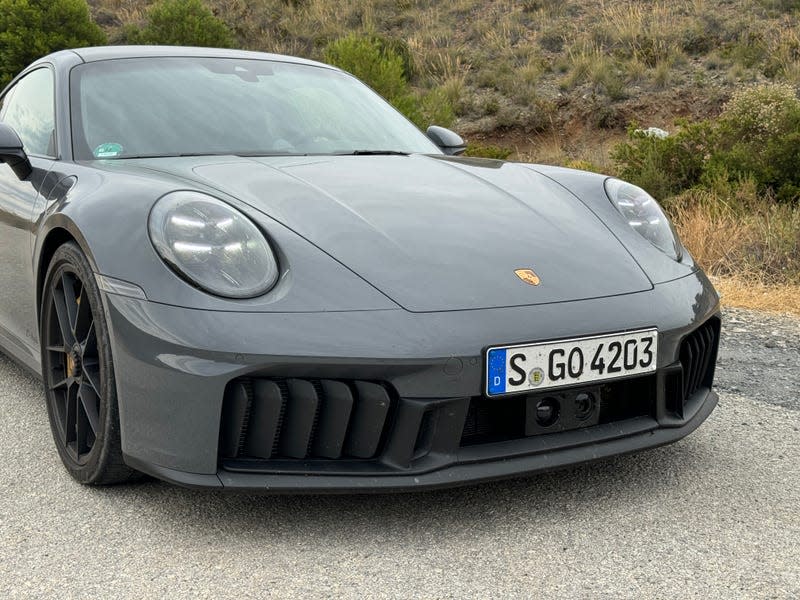
OK, yeah, it’s expensive. The new GTS T-Hybrid starts at $166,895, an increase of $14,345 over the 992.1 GTS and about $45K more than a base Carrera. But the facelift comes with a number of previously optional features as standard beyond the aforementioned chassis stuff, like matrix LED headlights and lane-keeping assist, so the real price increase is only a couple grand. Still, quickly load one up with options as Porsche buyers do, and your GTS’ MSRP can easily start with a two at the front of it — Porsche says 40 percent of 911s get some amount of customization through Exclusive Manfaktur, and the Paint to Sample program is bigger than ever.
When Porsche revealed the original Cayenne there were basically riots in the streets; the Cayenne ended up being the best-driving SUV you could buy (and it still is). People were furious when the Panamera was unveiled, decrying Porsche for creating a sedan… And then the Panamera ended up being amazing (and it still is). When the Taycan made its debut, people said there’s no way an electric Porsche could be good. Five years later, the Taycan still is the benchmark for EV performance, and the brand is prepping an onslaught of other EVs, sports cars included.
Take a stroll through the 911’s history and there have been even more times where a new feature, model or engineering decision got the Porsche Guys activated. Look at the addition of all-wheel drive to the 964, the turbocharged base models of the 991.2, the luxury skew of the 992, basically everything about the 996. And yet, wouldn’t you know it, people always continued to buy the 911 and absolutely love them — and they still will for years to come, Porsche Guys included. The new Carrera GTS is a better, more exciting car because it’s a hybrid, not in spite of it. In ten years’ time, once other hybrid 911s like the 992.2 Turbo and GT2 RS have come out, I think we’ll look back on this car’s controversy and laugh. Or, at least, I will.
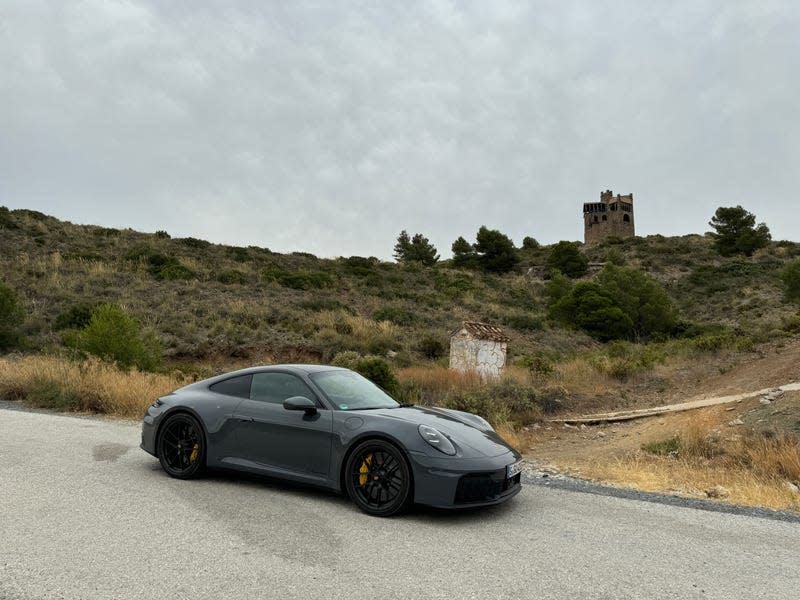
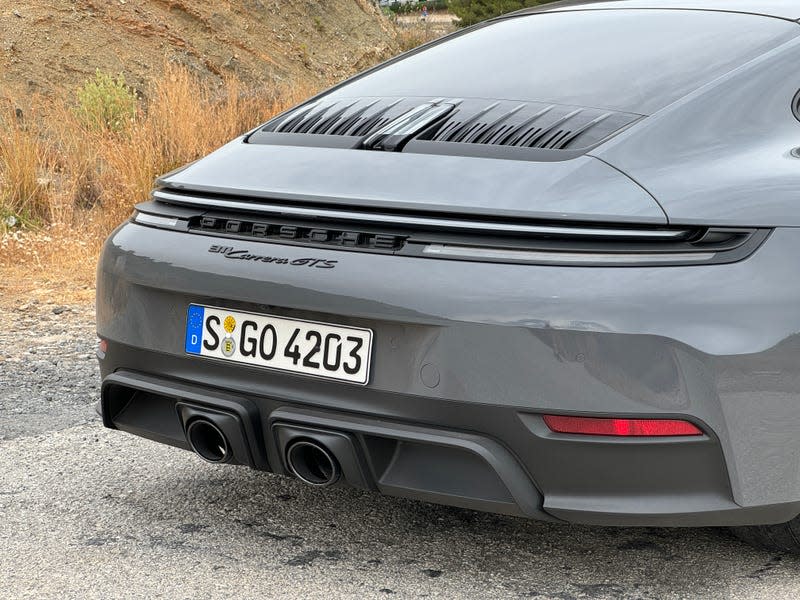
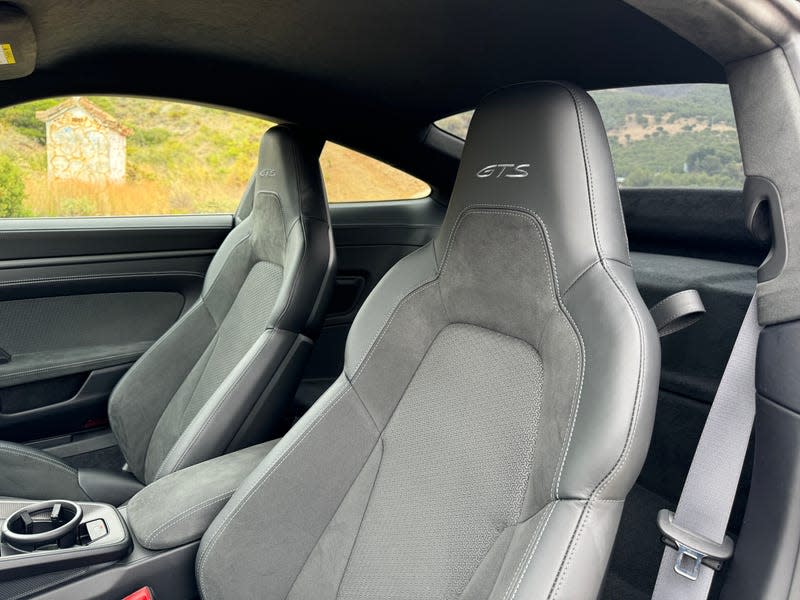
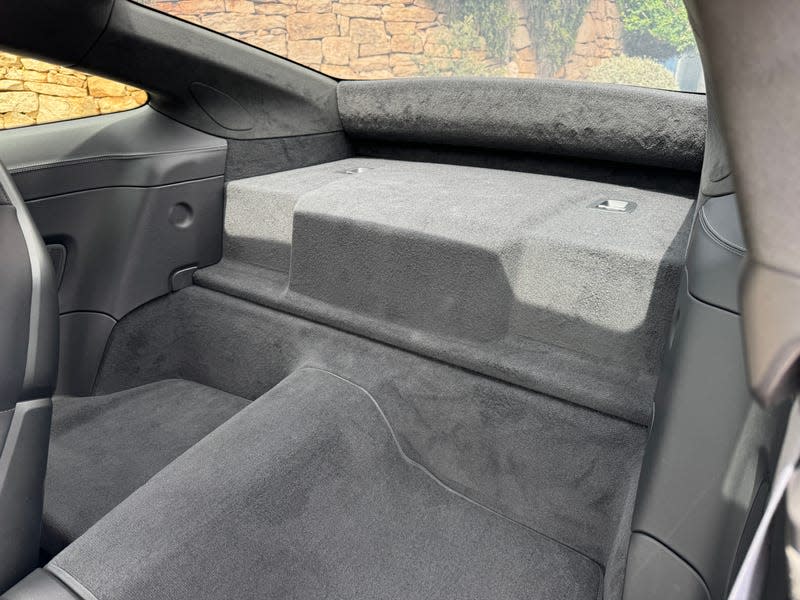
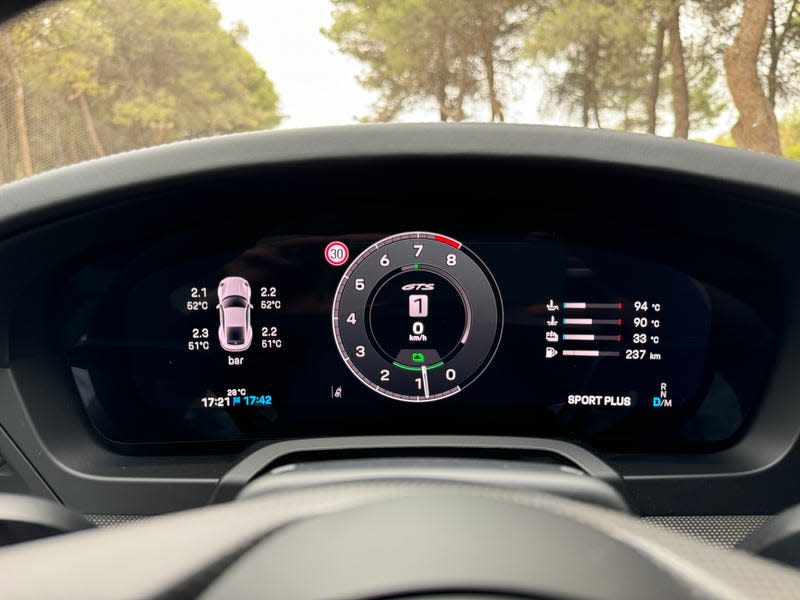
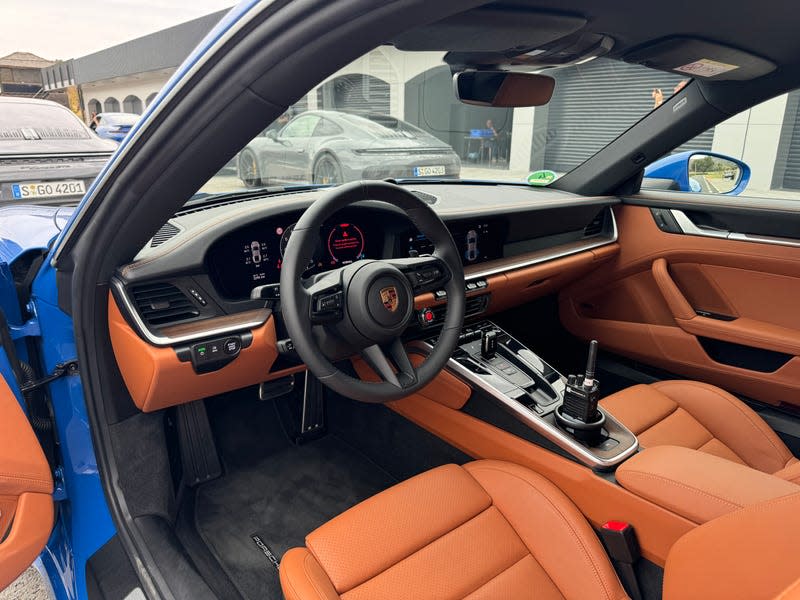
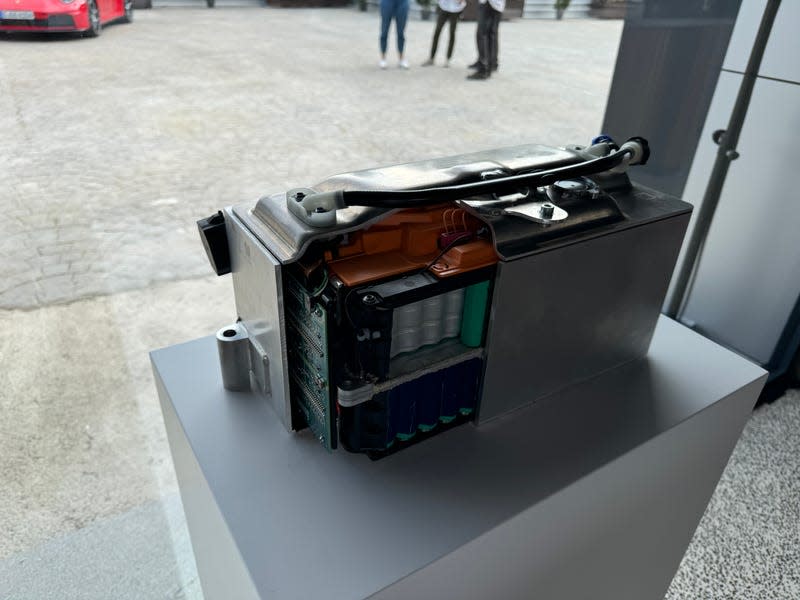

 Yahoo Autos
Yahoo Autos 
